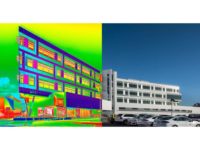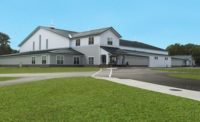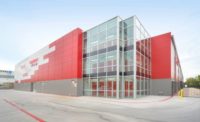Insulated metal panels (IMPs), a lightweight, single-component building enclosure system, are becoming a desirable building material choice for architects and contractors. IMPs consist of an outer skin that serves as either metal wall siding or metal roofing, and an inner face that serves as a metal interior finish or liner, with insulation sandwiched between these metal skins.
Simple in design but high in versatility and performance, IMPs are increasingly being used in a broad range of construction projects from tiny homes to massive distribution centers and everything in between. That’s because IMPs, the “Swiss Army Knife” of building materials, have multiple functions when it comes to energy performance, design flexibility, durability, and ease of installation.
Energy Performance
IMPs can offer high R-values of up to R-8.0 per inch. An air and watertight continuous insulation barrier seals the building enclosure and helps inhibit energy loss. This thermal efficiency and full vapor and water barrier make IMPs an energy efficient cladding option that helps cut down on building heating and cooling costs.
Airtight insulated metal panels with thermal resistance are increasingly important in the construction industry’s drive to meet specific energy targets. The high R-values delivered by innovative metal panel technology today are important for meeting increasingly stringent energy codes.
Tight fitting panel joints that provide airtight barriers and prevent thermal bridging and condensation make IMPs the preferred building envelope approach for massive, temperature-controlled buildings like distribution centers, warehouses, and data centers. Remaining air and weathertight over the life of a building, IMPs can lower energy costs and operating costs in facilities like these.
IMPs are not only being used in large-scale buildings. Tiny homes are using them to take advantage of their high-performing thermal properties. For example, QuickHaven, a developer of tiny homes for the homeless, utilizes IMPs for their energy efficiency as well as their durability and ease of installation.
Design Flexibility
IMPs today come in a wide range of panel profiles and patterns, color options and finishes that can be customized to fit any project’s design aesthetic. They can also be installed vertically or horizontally for more design options. This offers flexibility for design professionals, allowing them to create a distinctive look that reflects a brand’s image and create impactful designs that integrate with a location aesthetic.
An example of how the design flexibility of IMPs helps communicate brand image and identity can be found in the Bluegrass Harley Davidson dealership in Louisville, Kentucky. Orange and black custom-colored IMPs were used to help create the iconic and instantly recognizable Harley Davidson look at its 43,000 square-foot dealership.
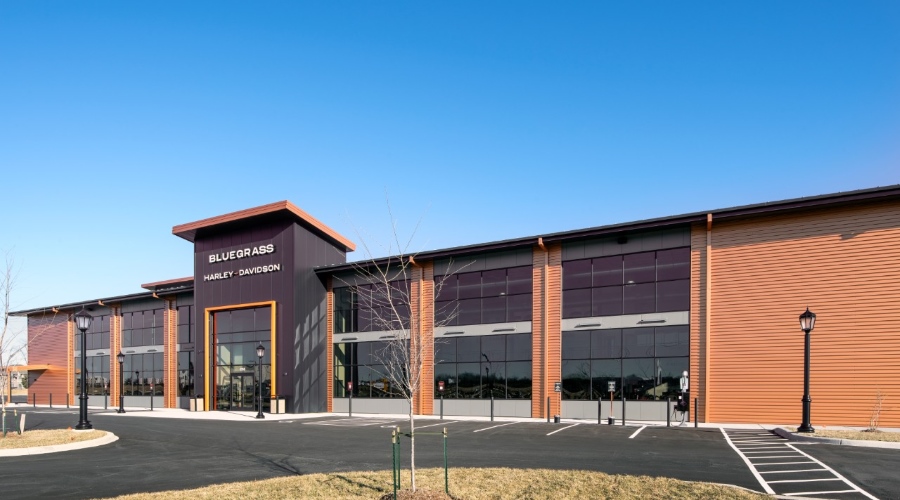
The creative design possibilities offered by these panels also make them popular for sports venues and stadiums.
Another example of the brand building power of IMPs is AutoNation DRV PNK stadium in Miami. Home to MLS soccer team Miami CF, this stadium complex features 40,000 square feet of IMPs in the team's signature black and pink colors on the 18,000 seat stadium grandstands and the exterior of the training center. The custom colors of the panels created a design aesthetic that continues to communicate the team’s brand image and identity.
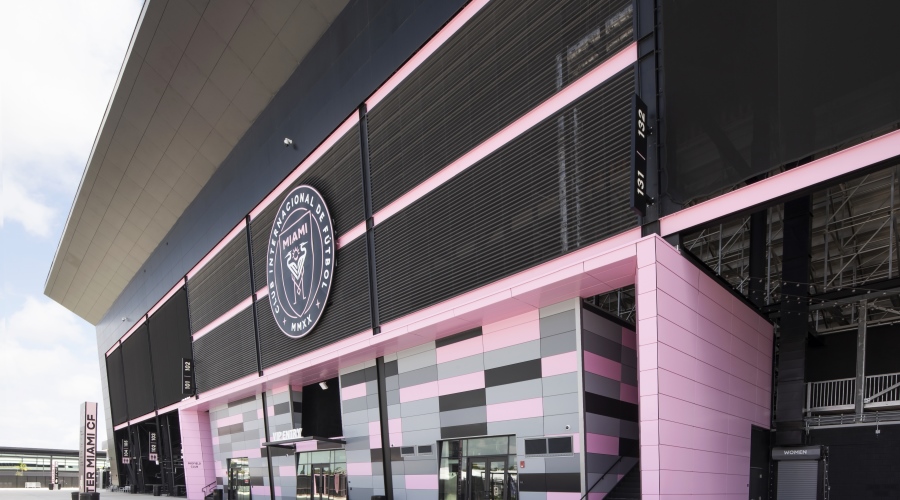
Decreasing Carbon Emissions
The energy-efficient properties of metal panels can help decrease carbon emissions. IMPs provide an airtight, moisture-resistant, rigid, continuous-insulation envelope, offering high R-values and a strong thermal performance that ultimately results in fewer greenhouse gas emissions, increased energy efficiency and reduced energy costs.
Selecting IMPs with lower levels of embodied carbon can contribute toward achieving Leadership in Energy and Environmental Design (LEED) certification in the U.S. Green Building Council’s Green Building Rating System.
Many of these panels are made of recycled steel, which reduces the demand for raw materials. Most IMPs are also recyclable when they reach the end of their useful life. Additionally, IMPs that don’t contain any Red List chemicals harmful to humans are a healthier building material option.
As businesses increasingly commit to reducing their environmental impact, commercial and industrial building projects are being designed with decreasing carbon emissions as a top priority.
Such was the case in building one of the largest e-commerce distribution centers in the country. Over 223,830 square feet of IMPs were used to construct the outer walls of the facility. The IMPs provide high thermal efficiency, reducing energy consumption and cost while keeping the massive distribution center at an optimal temperature without extra stress on the HVAC systems.
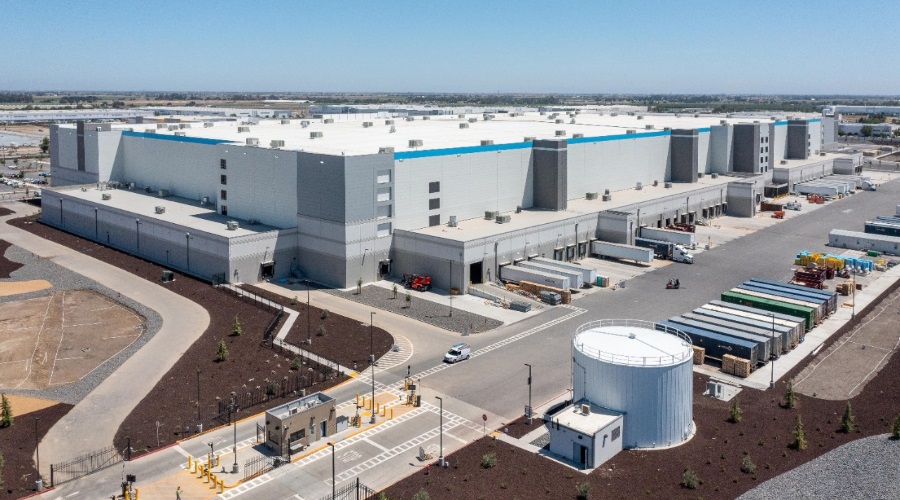
Durability
Constructed of durable steel and designed to last for decades, IMPs can stand up to inclement weather while remaining air and watertight. The durable design of IMPs also allows them to stand up to the wear and tear of all types of buildings.
They are also easy to clean and can be manufactured with special coatings that can withstand heavy sanitization, which makes them an ideal building envelope solution for food processing plants and other cold storage facilities. IMPs designed for these facilities help meet food processing guidelines and are offered in smooth surfaces that can be finished with a USDA-accepted coating. Their tight-fitting interlocking joints resist moisture and help lower bacterial growth.
Ease of Installation
As a single component system, IMPs help accelerate speed of build, creating construction efficiencies that result in labor and cost savings. The quick and easy installation of IMPs provides a weathertight building envelope in reduced time, drying in projects faster and allowing for inside finish work to begin sooner.
These prefabricated lightweight, modular panels require one installer, rather than multiple trades, which can lead to scheduling delays. Time is money in the construction industry, and the increased build speed of these panels helps construction projects stay on track, resulting in reduced downtime and on-time project completion.
Building projects across sectors have tight timelines, and the speed of build advantage of IMPs is another reason why they are selected as the building envelope solution on a wide range of projects.
Building projects from tiny homes to massive distribution centers are using IMPs for their versatility and performance. Whether the goal is to construct a building that is energy efficient, on brand, durable, delivered on time or all of the above, IMPs have the versatility and performance to meet the requirements of construction projects of all types and sizes.

